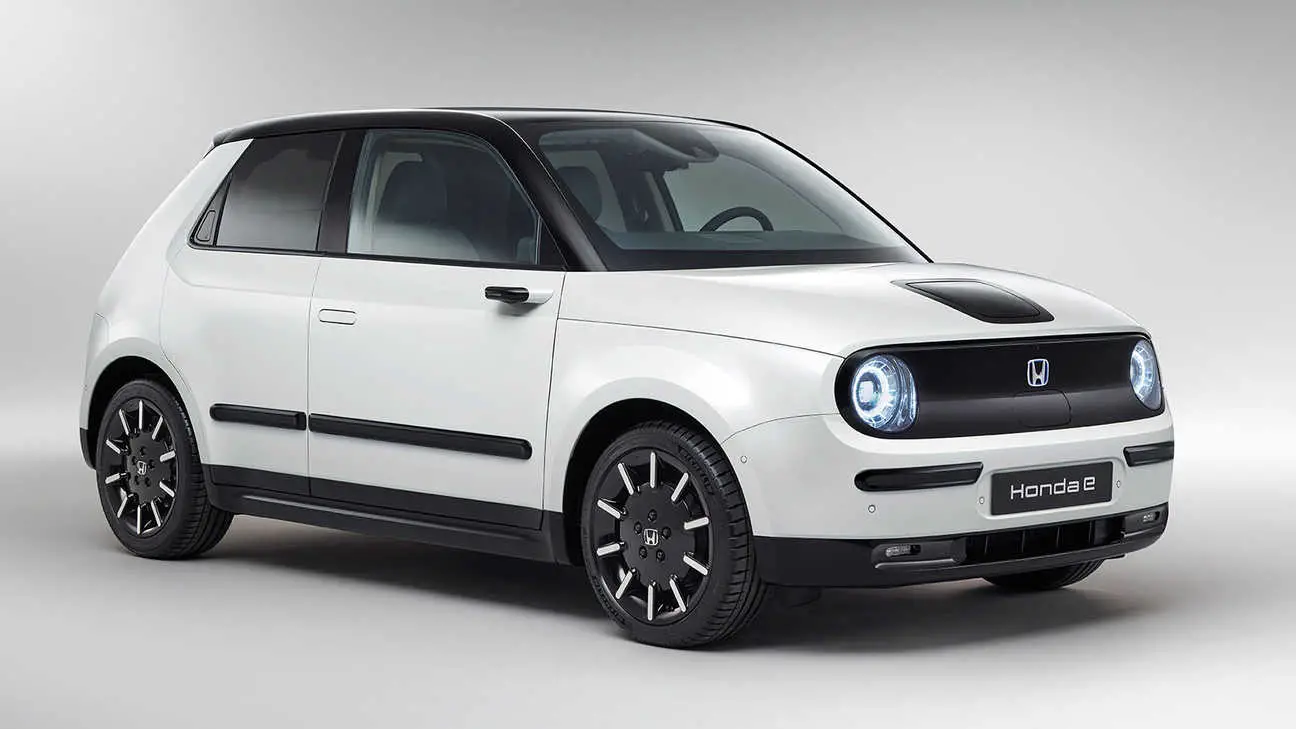Honda-e Electric Tech Update
Compared to the prototype the Honda e is a fit for a city car. It’s got four doors and a fairly small boot space under the hatchback of…

Compared to the prototype, the Honda e is a fit for a city car. It’s got four doors and a fairly small boot space under the hatchback of just 171 liters. The rear seats do fold down, though. Smooth lines dominate the overall look, which is further complemented by the svelte digital camera door mirrors and flush-fit door handles.
Due to rules and regulations, some cool show car stuff is gone but, in essence, the look is still very much there. Honda also has a range of cool colors to add a touch of zing. Platinum White Metallic shows off the black accents and trim features of the car, but the darker shades work too. There’s even a Charge Yellow if that’s your thing, while our choice would be the tasty Crystal Blue Metallic.
It’s perhaps the interior, or more specifically that dashboard, which has attracted most attention when it comes to the Honda e. It divides opinion, but the reality of driving a car like this with, seemingly, lots going on and plenty of potential distractions, doesn’t pan out quite like that. When you’re moving, there’s a lot you won’t and can’t use. You can not watch or play games when the car is moving unless brake is applied.
The Honda e Advance gets you a center camera mirror system, heated steering wheel, automatic parking, a beefed-up audio experience along with blind-spot information and a heated front windscreen.
There’s also the option of 17-inch alloys over the 16-inch standard offerings, although that reduces the range of the car from 136 miles to 127. In addition, Honda is making its newly developed home chargers available as part of the package for added convenience.
The dashboard is basically divided up into segments, so either side of the digital mirror screens at each end you get a driver display plus two screens supplemented with digital buttons.
Once you’re stationary, however, the Honda e turns into a veritable entertainments center, with connectivity that not only includes the usual USB ports front and rear, but also an HDMI port, 12V power and a 230V (1500W max) mains plug socket. The European car had a two-pin one, but buyers in the UK will get a three-pin. That means you can get your PlayStation or Xbox set up in there. Turn on the Wi-Fi hotspot in the Advance model, and you can game online.
The trim is simple but effective. It’s a combination of wood on the dashboard, plastic, and material on the seat covers and door cards that feel like the best bits of a DFS showroom.
There’s a lot of techs packed into the Honda e, both inside and out. With a price tag (including the £3,500 government grant in the UK) of £26,160 (about $34,000, AU$50,000) for the basic e model and £28,660 (about $24,000, AU$36,000) for the Honda e advance it seems worth going for the model with the better specifications.
Honda also has its Personal Assistant, which can be tapped up via the dashboard array. So far, we’ve only ever asked about the weather, but it will apparently use the power of AI in order to give your daily driving experience the personal touch. Meanwhile, the Honda+ app will, once final testing has been completed, allow you to do all manner of things, from opening and closing the car remotely through to keeping an eye on the all-important charging from afar.




